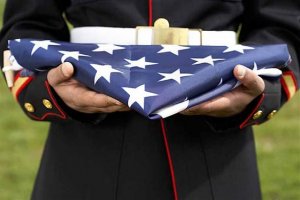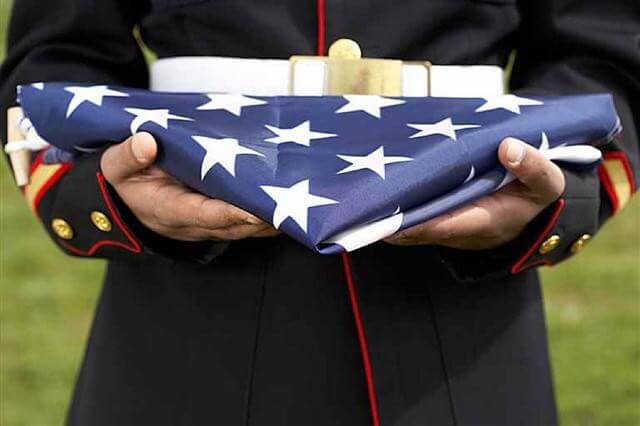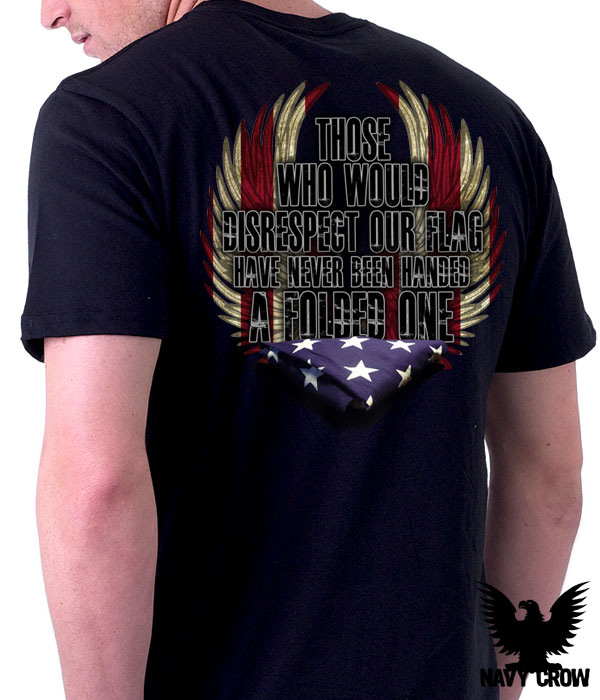 What is the significance of a folded flag?
What is the significance of a folded flag?
When a service member dies in action, their next of kin is handed a folded flag. The reason should be apparent: it’s a sign of respect to the bereaved family. It’s a reminder that while their loved one isn’t coming home, they died fighting for what they loved.
When our troops deploy, the common thinking is that our heads are full of ideas of patriotism, of American flags billowing across every inch of the globe. This thinking couldn’t be more wrong.
Over 1.3 million Americans have died in combat since the formation of our country. While it’s difficult to generalize a number of people that massive, I can venture a guess that the last thought that went through their minds was not America the Beautiful or From Sea to Shining Sea.
I can say with the utmost certainty that the final thoughts of almost every fallen warrior, American or otherwise, is one of their loved ones.
That, ladies and gentlemen, is why we do what we do, why we’re willing to sacrifice ourselves to a cause greater than ourselves. We do it for our wives and husbands, our children, our parents, and our religion.
In 2013, I was manning an M240 machine gun on the bridge wing of an Arleigh Burke-class destroyer while transiting the Suez Canal. If you followed the news that year, it was the year the Arab Spring was in full swing: popular upheavals throughout the Middle East gave rise to serious unrest across the region, creating battlegrounds that are still being fought to this day in Syria.
During this time, the Egyptian military staged a coup against Mohammed Morsi, who himself had unseated Hosni Mubarak and taken control of the government. Morsi, an avowed Islamist, was not without some popular support among devout Muslims, and riots and protests were constant and violent.
Three days before my ship transited the Suez Canal, a terrorist fired a rocket-propelled grenade at a merchant tanker transiting through the area. Tensions were high, and being that the canal is only a few hundred yards wide at it’s widest points and a hundred yards wide at it’s narrowest, transiting ships are very, very exposed.
As I stood on the bridge-wing behind my M240 watching the tree lines and grassy ravines for signs of suspicious movement, I’ll tell you what I was thinking about:
I thought about my wife, how she’d take it if our ship was the next one to take a rocket to the hull with me standing right where the Captain, Navigation Officer, and Egyptian Army liaisons were driving the ship from. I remember being glad I wouldn’t have to see my mom receive news that I’d been killed. I thought about how, if it happened, dying this way wasn’t the worst way to go.
We survived, of course. No terrorists tried to attack us, and we made the transit eleven more times without incident, thanks largely to the heavy Egyptian army presence along the canal.
Many of my Army and Marine vet buddies would scoff at this story, and with good reason. How much danger, really, is a sailor at when he’s on the bridge of a destroyer? The answer, thankfully, is very little. But at the time, the danger felt about as real as it can get.
I use this case to illustrate why, exactly, that folded flag is important. Don’t think of it as a reminder that someone died for the United States. It is that, certainly, but think of it as a physical reminder of the things that are most important to our men and women in uniform: we do it for our loved ones. We do it for our families, that they can continue to live a life of freedom where the danger stays half the world away.
Be sure to check out Navy Crow this month for the new Folded Flag T-shirt design. It’s been a huge hit among the veteran and active duty family community, and we’re honored to present it at a 15% discount for Military Appreciation Month with code ANCHORSTRIKE15 at our website!








